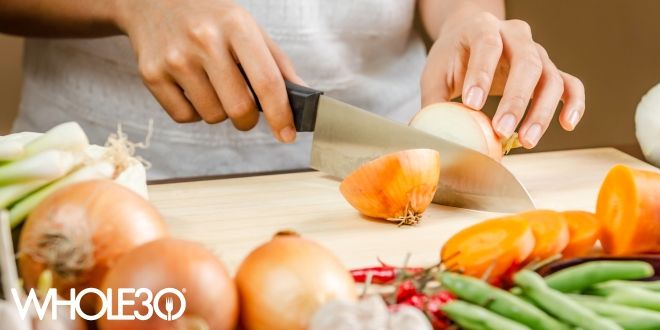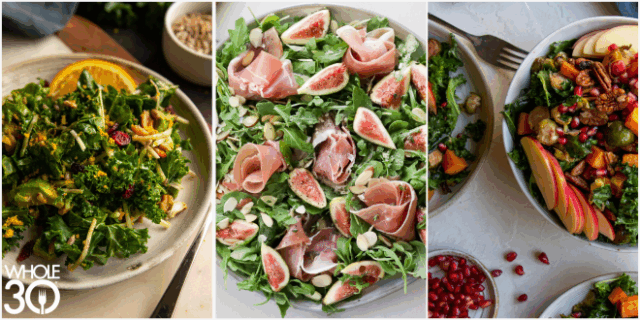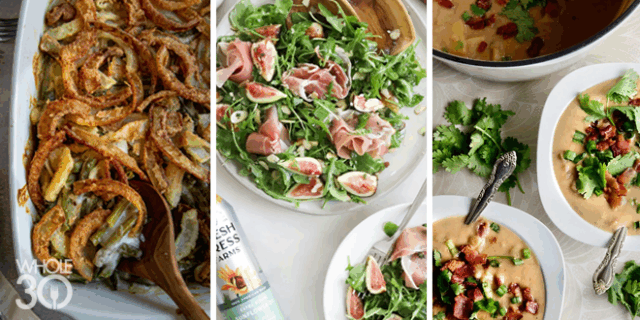Vegetables naturally come in so many fun shapes. You have crowns of broccoli, heads of cabbage, bulbs of garlic, and whatever the artichoke is doing. But these shapes, though fun, aren’t always easy to deal with while cooking. That’s why it helps to learn different types of vegetable cuts to aid your meal prep.
Eating your veggies is great no matter how you do it, but picking the right cuts can elevate the dishes you make. Opting for a large cube when you need a mince can cause problems. (If you’re unsure what those vegetable cuts are, we’ll cover it in a bit.)
This goes beyond simply knowing how to cut vegetables, though knife skills are still important. No matter what shape you pick, the uniformity of your cuts makes a difference. The closer your vegetable cuts are in size, the better consistency you’ll have on the plate. You don’t want your perfectly sautéed carrots sprinkled with smaller, burnt pieces and bigger chunks that are a little too al dente.
How to pick the right vegetable cuts for your meal
Practice is important whether you’re jumping rope or cutting vegetables—activities that, under no circumstances, should be attempted at the same time.
The practice here involves quality time spent with a cutting board and your favorite chef’s knife. It also means the trial and error of cooking, eating, and tweaking your recipes.
The Internet isn’t very useful when it comes to logging time in your IRL kitchen. But it can help you build a base of understanding so your trials are smoother and your errors are easy to swallow.
That’s why we’re here.
Our approach to picking the right vegetable cuts involves asking a series of questions that will guide your decisions. You may not need all of the questions to determine the right vegetable cut for your dish and you can answer them in whatever order you want.
If you’re cooking from a recipe, you really only need to answer one question: What does the recipe say? Then just do that. But if you want to improve your understanding of veggie cookery, we have some more questions for you.
What role does the vegetable play in the meal?
The vegetables in some recipes are background players, building up layers of aroma and flavor. Think about the diced onions, garlic, celery, and carrots that form the base of many dishes. Other recipes call for a vegetable to step to center stage and shine—like a cauliflower steak or a spectacular side of sautéed green beans.
Answering this question will make it easier to determine the size and shape of your vegetable cuts. A disappearing act or background role requires a smaller size, while a star-making performance likely calls for a larger cut.
How would you like this vegetable to appear in the final dish?
Sometimes you want a broccoli floret to grace the plate as the cute little tree it is. Other times, you want the floret halved and roasted to a deep brown on one side. It’s all about what works best for the dish. Maybe you want to hide the appearance of garlic and onions so they melt into a sauce or soup. Other times, a bunch of sliced onions cooked until caramelized are needed to top a protein or veggie side.
What’s your cooking method?
How you’re going to cook your veggies has a huge impact on your choice of cut. Minced garlic is a mess when fried, but is at home in a braise. If you’re roasting Brussels sprouts, broccoli, or zucchini on a sheet pan, you want to choose a cut with more flat surface area to maximize contact with the sheet pan.
How long are you cooking this?
Cooking time and method are closely tied. That makes sense because, for example, it takes less time to pan-sear than it does to oven-roast. Both considerations also have similar impacts on the types of vegetable cuts you choose.
A longer cooking time means more opportunity for smaller cuts to lose their shape and texture. A shorter cooking time means larger pieces may not cook to your desired level. So your answers to the appearance, cooking method, and time questions will be illuminating. Depending on your answers, you might opt for a larger round of carrot instead of a dice in a soup. That way the vegetable retains its integrity and appearance.
What’s the vibe of the dish?
You’re always trying to make tasty food. That’s a given. But that deliciousness can be delivered in various packages that give off different vibes.
Are you going for rustic? Is it a fancy dish meant to impress? Do you want to be giving Michelin star?
Your answer will make it easier to evaluate size and shape. That rustic stew looks amazing with big, chunky pieces of different vegetables. But huge hunks of carrot may distract from the beauty of your refined dish’s five-star plating.
Is a vegetable noodle or rice involved?
A lot of Whole30ers turn to veggie versions of noodles and rice at mealtime. This question is not really about what to choose for noodles (firm squashes and root vegetables) or rice (cauliflower is the champ, but broccoli works). Instead, the fact that you’re having a veggie noodle or riced cauliflower is something to consider when picking your other veggie cuts.
When adding to veggie noodles, avoid long, thin shapes that mimic the noodles. Use rounds or cubes for contrast, or mince to make sure the other veggies disappear into a sauce. Riced vegetables mimic a large mince or small dice. So bust out your strips of pepper and matchstick cuts to keep the distinction between “rice” and what’s on top.
How much time do you really want to spend cutting vegetables?
In retrospect, maybe this actually should be the first question you ask. If you don’t have time for a lot of fancy or laborious knife work, you’ll opt for different vegetable cuts. Or you can save time by grabbing pre-cut or frozen options instead.
Best uses for common vegetable cuts
You don’t need to memorize all the different types of vegetable cuts to make good food. Knowing some vocabulary can help you—especially when it comes to reading recipes. Below, you’ll find a beginner’s guide to vegetable cuts and a few of their best and most common uses.
For those deep into French cooking, you’ll notice cuts missing and a few names that lack any Frenchness. This is not a comprehensive list. You’ll see the highlights and any French names that are easily understood—the rest will be simplified for easy understanding.
- Mince: the tiniest of the major cuts results in very small pieces that are great for the aromatic vegetables you’re using to build a base of flavor. This will also bring out a more assertive flavor in garlic.
- Dice: a step up in size from a mince, the dice results in small pieces that often come with other qualifiers (a medium dice, for instance). This is one of the most versatile veggie cuts and one you’ll use in longer cooks, shorter sautés, and most options in between.
- Cube: the next size up from a dice is a popular cut for root vegetables destined for a sheet pan, soup, or hash. In a recipe, it will often specify a size—a half inch, one inch, etc.—for your square cuts.
- Slice: longer and thinner than a cube, the slice is a common treatment for a variety of vegetables you’ll sauté or pan roast—especially where you want more flat surface area. The thinner the slice, the more an onion or carrot will melt into a long-cooking dish.
- Julienne: this matchstick method for cutting vegetables is a middle ground for size, and can make really fun shapes to add to salads.
- Rondelles (aka rounds): you can guess what this cut is, and you’ve probably seen it used in a variety of applications—on salads, in soups, for a sauté or pan roast. You could also opt for half or quarter-rounds if they fit better.
- Angled: this is often described as “cutting on a bias.” No matter the wording, it’s a great way to maximize flat surface area, which helps with pan contact and browning.
Your veggies can be a cut above
Next time you’re facing a bag of farmer’s market goodies, you have a jump on maximizing their flavor and texture. Keep building your base of vegetable knowledge by asking the questions above, practicing your skills, and not being afraid to experiment with different types of vegetable cuts.
For recipes to practice on and more meal prep tips, sign up for the Whole30 email list. You’ll get a variety of compatible recipes, insightful articles, and much more delivered to your inbox every week.















